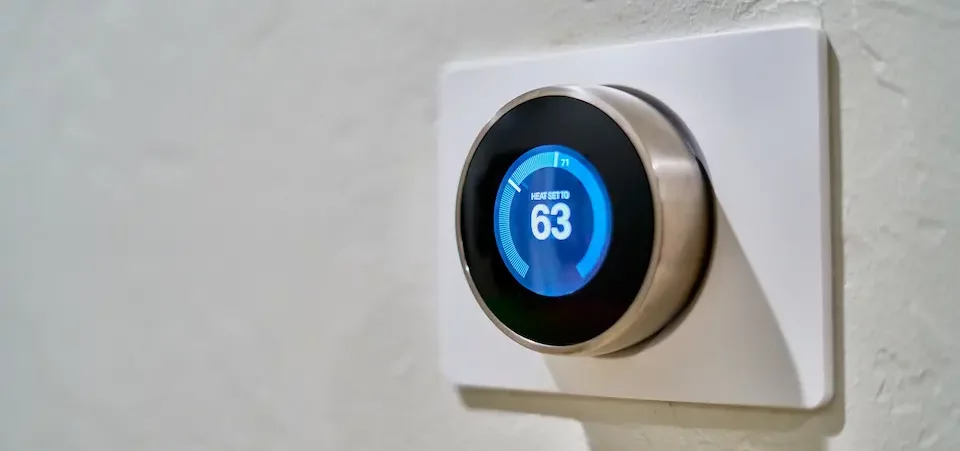Honeywell is the most well known and widely used thermostat brand on the market, and…
Why Is the Temperature Above My Thermostat Setting?
Home » HVAC Blog Articles » Why Is the Temperature Above My Thermostat Setting?

You rely on the temperature in your house to be in sync with the thermostat setting. When you want the temperature to be 78 degrees Fahrenheit, that’s what you set the thermostat to. But, what if the two aren’t matching up? If you set the thermostat to 78 degrees and the temperature in the house is higher, you aren’t very happy. This is a common problem for many Triangle residents in their homes and can be a tough one for you to diagnose.
As an air conditioning repair company, Bowman Mechanical has seen this issue many times before and knows the things to look for in determining the source of the problem. In this article, we want to shed light on possible reasons why there can be a discrepancy between the temperature and the thermostat setting and what steps may rectify the situation.
Room Temperature and Thermostat Setting Don’t Match
When the temperature in a room(s) doesn’t match the thermostat setting, it means that the thermostat can’t accurately measure the room’s temperature for some reason. Several things can be the culprit. Everything from the power for the thermostat to the thermostat itself may be faulty. However, there is a strong likelihood that if the thermostat goes above the set temp, it isn’t working properly.

Electronic Thermostats
Electronic, also known as “digital”, thermostats are more and more the standard as opposed to the traditional analog thermostat. Most homeowners with the older type are upgrading to digital and nowadays all new homes have digital thermostats installed. Digital thermostats allow you to program a schedule for the air conditioner and heating system, making your home more energy efficient.
All thermostats work in the same way, by sending a current through an internal component called a thermistor. This measures the resistance of the current and helps calculate the indoor temperature. The thermostat uses the indoor air temperature to compare to the preset temperature. When there is a variation between the two, the thermostat sends a signal to the HVAC unit, which then turns on or off to alter the room temp closer to the desired temperature.

Thermostat Location
The location and placement of a thermostat can affect the temperature in the home. The thermostat monitors the temperature and sends signals to the HVAC unit to achieve your preferred settings. Because thermostats sense the ambient temperature, placement is important. Incorrect placement of the thermostat can result in inaccurate temperature readings and, as a result, make the HVAC system run either too long or not enough. This can lead to increased wear and tear and uneven heating and cooling as well as waste energy which leads to high air-conditioning bills.
Ideally, the thermostat should be positioned in a central place, out of direct sunlight, that you use frequently and where natural air circulation occurs. It should be installed at a height of 52 to 60 inches. Above 60 inches will cause high readings and below 52 inches will read as lower temperature due to the fact that hot air rises and cool air sinks.
It is best not to place a thermostat in a spot where there is a cold draft from windows or where there is warm air from a kitchen. This makes it nearly impossible to have an accurate reading of the ambient temperature in your home.
Things to Check if Your Home Has a Higher Temperature than Your Thermostat
Here are some items to check when attempting to determine if the thermostat is working properly as well as how to fix potential thermostat problems.
Check the Temperature Sensor
The thermostat sensor is located near the evaporator coils inside your air conditioner unit. As air from the return vents passes by the sensor, it reads the temperature and compares that reading to the setting on your thermostat. When the sensor isn’t working correctly, it may cycle on and off randomly between proper activation periods causing your home to be either too hot or too cold due to the thermostat switching on and off before the correct temperature is met.
Start by turning off the air conditioner. Then, shut off all power by using the breaker at the electrical panel. Remove the cover on the inside HVAC unit in order to expose the evaporator coils. The sensor needs to be close but not make direct contact with nor be too far away from the coils. If you aren’t sure of the sensor’s proper placement, it is best to call a professional HVAC technician to complete the repairs.
Check the Blower Motor
Blower motors are designed to circulate air. If there is no air to move, then the blower won’t work. Always check the filters and vents surrounding the blower to make sure that the blower isn’t struggling. If the arrows on the air filter are pointing in the wrong direction, change the orientation of the filter. Then, check the vents around the blower. If the vents are closed or clogged, your blower may be too dirty to work. If the blower looks dusty, spray the dust away with compressed air or wipe it away with a rag.
Check the Power Sources
First, make sure the thermostat has power. Some thermostats have batteries that can go bad. Swap out the batteries and see if that corrects the thermostat readings. If the batteries are good, then look at other power sources in your home like blown fuses and tripped breakers. If you suspect that the issue may be a breaker or fuse, you may need to hire an electrician to fix the problem.
Recalibrate the Thermostat
Usually, you don’t need to calibrate a digital thermostat since they are calibrated by the manufacturer. But, it can be a best practice to check the thermostat’s calibration once a year. Fall is a good time to do this. Tape an accurate thermometer on the wall next to the thermostat. Wait 15 minutes and check the temperature reading on both devices. If the reading is three or fewer degrees apart, the thermostat should be fine. On the other hand, if the variance is greater than this allowance, you may need to get the thermostat serviced.

Upgrade the Thermostat
The possibility exists that you may need to upgrade your thermostat to get an accurate temperature reading in your house. The better thermostat you have, the more efficiently your HVAC system will run. If your thermostat is older than ten years, your system will more than likely run better with an upgrade to a programmable thermostat. Even if you already have a programmable thermostat, newer smart thermostats can mean lower heating and cooling costs.
Here are some reasons why you should consider an upgrade:
- Your thermostat is analog or contains a mercury switch
- Your thermostat isn’t programmable
- Your thermostat is older than 10 years old
- Your thermostat gives faulty readings
- Your thermostat doesn’t respond to changing settings
- Your HVAC system short cycles
- You have suspiciously high energy bills
Maybe the Weather is Just Too Hot!
When the outside temperatures are soaring, your thermostat and HVAC system may not be able to keep up. It’s natural to want to set the air conditioner at a lower temperature to stay comfortable during extreme heat in the summer. At the same time, you want to use the desired temperature that won’t increase your heating and cooling costs. When everyone is setting a lower temperature inside, it is a huge drain on the power grid and creates a situation that can become dire resulting in widespread power outages.
The best temperature setting in your house during the summer is 78 degrees Fahrenheit when you are home. If you are away from your home for an extended period of time, it is a good practice to raise the setting or even turn it off entirely. Programmable smart thermostats can help in making it easy to monitor your home’s temperature while away.
Contact Bowman Mechanical for Your HVAC and AC Repair Needs
Bowman Mechanical has experience in troubleshooting temperature and thermostat variances. Our professional team has the knowledge to get to the core of the problems you may be experiencing with regulating the temperature in your home. If you are stumped, call us at (919) 679-9583 or fill out the form below.
Contact Our Heating and Air Conditioning Repair Company Today!
We would love to hear from you! Please fill out this form and we will get back to you shortly.
Related Posts
- How to Troubleshoot My Honeywell Thermostat
- Why Every Home Needs HVAC Preventative Maintenance
Your home's heating and air conditioning system works hard to keep your home cool and…
- Why Is My Air Conditioner Freezing Up
During a sweltering North Carolina summer, the last thing you need is for your air…
